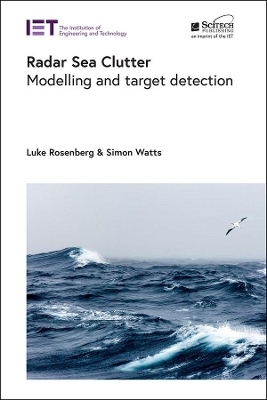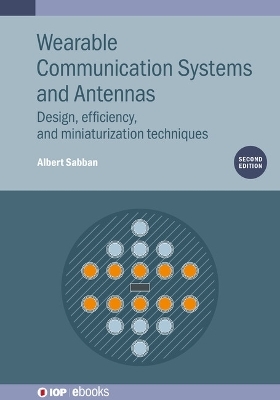
Radar Sea Clutter
Institution of Engineering and Technology (Verlag)
978-1-78561-913-7 (ISBN)
The first maritime surveillance radars in World War II quickly discovered that returns from the sea, soon to be known as sea clutter, were often the limiting factor when attempting to detect small targets while controlling false alarms. This remains true for modern radars, where the detection of small, slow moving targets on a rough sea surface remains one of the main drivers for maritime radar design, particularly in the development of detection processing.
The design, development and testing of radar signal processing for maritime surveillance requires a very detailed understanding of the characteristics of radar sea clutter and of the combined target and clutter returns. This book provides an updated and comprehensive review of the latest research into radar sea clutter and detection methods for targets in sea clutter. The emphasis is on understanding the characteristics of radar sea clutter as observed with different radars, viewing geometries and environmental conditions. This understanding is assisted by the development of mathematical models that are used in the radar design process.
In recent years there has been an increased interest in operating at higher altitudes, resulting in the sea surface being illuminated with larger grazing angles than used in traditional airborne surveillance platforms or ground-based systems. There has also been significant research into bistatic operation, including passive radars using illuminators of opportunity. The use of coherent and multi-aperture systems in maritime radar are also of increasing interest and these new application areas are also covered in this book.
Luke Rosenberg is a research specialist at the Defence Science and Technology Group in Australia and an adjunct associate professor with the University of Adelaide. His work covers a range of areas related to airborne radars. Dr Rosenberg has received the prestigious Defence Science and Technology Achievement Award for Science and Engineering Excellence in 2016 and the IEEE AESS Fred Nathanson award in 2018 for 'Fundamental Experimental and Theoretical Work in Characterizing Radar Sea Clutter'. Simon Watts MBE FREng was a deputy scientific director and a technical fellow in Thales UK until 2013 and is a visiting professor in the Department of Electronic and Electrical Engineering at University College London. He has over 40 years' experience of researching the design of airborne maritime radar systems and the modelling of radar sea clutter.
Chapter 1: Introduction
Chapter 2: Monostatic sea clutter
Chapter 3: Bistatic sea clutter
Chapter 4: Parametric modelling
Chapter 5: Sea clutter simulation
Chapter 6: Performance prediction modelling
Chapter 7: Maritime target detection techniques
Chapter 8: New approaches for target detection
Appendix A: Goodness of fit metrics
Appendix B: Bimodal parameters for the evolving Doppler spectrum
Appendix C: Atmospheric and precipitation losses
| Erscheinungsdatum | 02.02.2022 |
|---|---|
| Reihe/Serie | Radar, Sonar and Navigation |
| Verlagsort | Stevenage |
| Sprache | englisch |
| Maße | 156 x 234 mm |
| Themenwelt | Technik ► Nachrichtentechnik |
| ISBN-10 | 1-78561-913-6 / 1785619136 |
| ISBN-13 | 978-1-78561-913-7 / 9781785619137 |
| Zustand | Neuware |
| Informationen gemäß Produktsicherheitsverordnung (GPSR) | |
| Haben Sie eine Frage zum Produkt? |
aus dem Bereich


